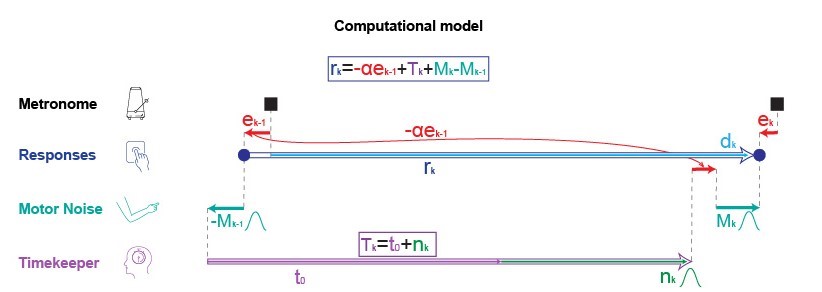Individuals with autism are most known for their impaired social skills, but in addition, they also present with atypical perceptual and motor skills, which are believed to be more fundamental. In recent years several opposing theories were proposed to explain these atypicalities. One prominent theory predicts individuals with autism are slow to update their actions and internal models when the external environment changes, while the other theory predicts exactly the opposite. The study aims to arbitrate between these opposing predictions by using computational modelling of a finger-tapping task, which requires participants to constantly correct their responses to synchronize with the external metronome signal. Individuals with autism are shown to be poor synchronizers, compared to both neurotypical and dyslexic individuals. The computational model disentangles the contribution of error correction from other noise factors, showing that only error correction is reduced in autism, while noise levels are intact. Thus, individuals with autism are slower to react to external changes, which impedes their ability to synchronize with the environment, supporting the slow updating hypothesis.

Figure description: The illustration depicts the computational model used in the paper to disentangle the contribution of error correction from that of internal noise sources.

